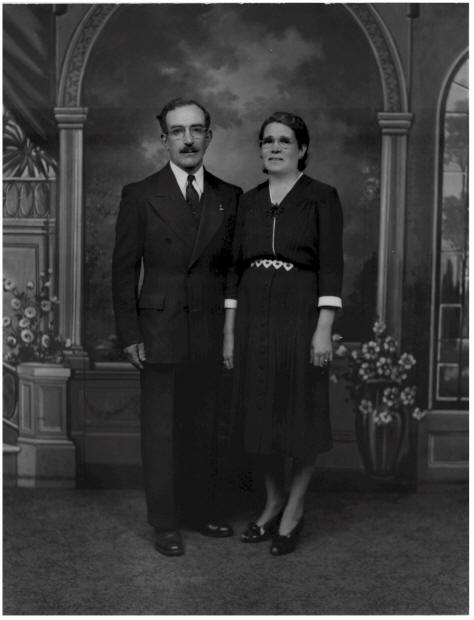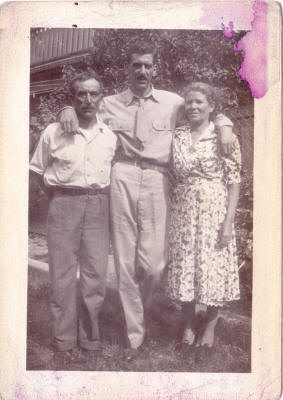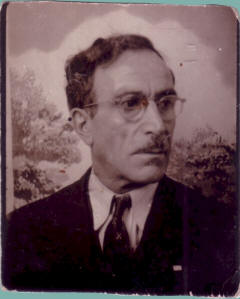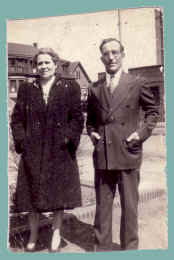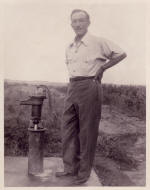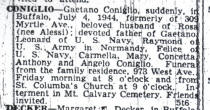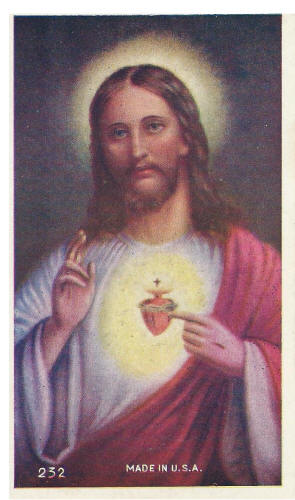In
Serradifalco, Sicily, on Friday, 26 April 1889, the sun rose at
5:04 AM and set at 6:39 PM.
But my grandfather, Gaetano Coniglio the elder, never saw it rise or
set, because he was down in the bowels of Stincone, one
of the local sulfur mines, working to earn a meager living for
his wife Maria Carmela Calabrese and their family.
Maria Carmela had borne him eight children, but
Raimondo, the eldest, had left for Argentina, and three others
had died in infancy, including little Leonardo, three years
earlier.
Gaetano had entered the mine long before sunrise, and
as the hour approached eight in the evening, he packed his gear
and made the long, slippery climb out of the mine. He trod
on footholds barely carved in the rock, slippery from the sweat
of the labors of the carusi, the mine-boys who toiled all
day, carrying the raw sulfur to the furnace outside the mine.
The moon was new, and invisible, but even so, as he
left the black mouth of the mine, by comparison the starlit sky
shone like dawn. His cumpari, pick-men like
himself, were the brothers
Vincenzo and Salvatore Barile. They accompanied him as he walked the
three miles to his humble home at Via Migliore number ten.
Like them, he was virtually exhausted, but his thoughts were
about Maria Carmela.
She was in her final
days of pregnancy, and it had not been an easy one. He
knew that his only daughter, thirteen-year-old Maria, not only
would be tenderly caring for her mother, but also would have a
bowl of hot minestrone ready for him when he arrived, perhaps
even with a shred of the lamb they had relished on Easter, the
previous Sunday.
But as he approached the corner of Via Roma and Via
Migliore, he saw Maria anxiously pacing there. When she
spied him, she ran to him, shouting "Papà,
Papà,
sa veni, sa veni, lu bamminu arrivà!" (Papa, Papa, come sir,
come sir, the baby boy has arrived!)
He and his friends hurried into the building,
scattering the family livestock kept on the ground floor - two
hens, a rooster and one remaining lamb. Gaetano rushed upstairs
to the living quarters to see Maria Carmela calmly suckling a
red-cheeked, black-haired cherub. A stoic who did not
often show his emotions, Gaetano laid a tender hand on his
wife's cheek and muttered "Ha fattu beni, cara."
(You've done well, dear.)
Carmela took the praise and jokingly responded "Unn'ha
statu? Era natu a li cincu. Iddu antura si mpara a parlari!" (Where
have you been? He was born at five o'clock. He
already knows how to speak!).
The rest of the evening, into the early hours, was
spent in an alcove of the living area by Gaetano and his friends
'Cenzinu and Turiddu, made somewhat festive by the
decorations and baskets of palms Gaetano had woven two weeks
earlier. The cumpari nursed a small
bottle of wine that Turiddu had magically produced from
his pack, while Gaetano sang the praises of his new son, not
omitting the fact that he had fathered the child at age
fifty-three! Home-made bread dipped in the wine helped to
sustain their revelry, as his friends cried "Tanuzzu, tu puru
ha fattu beni!" (Gaetano, you, too, have done well!)
The night deepened, and they realized they must return
to the mine that morning: each found a warm spot on the floor
and napped as best he could, while Maria tended to the needs
of her mother and her new baby brother.
As Saturday morning approached, the men shook
themselves awake, grabbed crusts of bread and their packs, and
began the walk back to Stincone. Dawn was staining
the sky, and they approached the mine with trepidation.
The mine owner was Mastru Licalsi. They called him 'Mashu
Babbu', 'Master Dummy'. He was standing arms akimbo in the
mine's entranceway, and he berated them for being
late, saying he would dock them for the lost time.
Emboldened by his new fatherhood (and perhaps by last night's
wine), Gaetano retorted "Go ahead, and while you're at it, you
can dock me for a half-day, because this morning, I'm taking my
son to the municipiu to have his birth registered!"
Before Mashu Babbu could sputter a response, 'Cenzinu
and Turiddu piped up "You can dock us, too, because we're
going as his witnesses!" And they turned on their heels
and trudged back into town.
So it was that at ten that morning, 27 April 1889, 'Cenzinu
and Turiddu, with Gaetano gingerly cradling his baby boy,
took the short walk to the town hall on Via Duca di
Serradifalco.
Gaetano presented the child for Town Secretary Pasquale
Vaccari to see, while a clerk recorded the details:
"Your name?" - "Gaetano Coniglio"
"Age?" - Gaetano, with obvious pride, replied "Fifty-three!"
"Occupation? - "Sulfur miner."
"Date and time of the birth?" - "The twenty-sixth of
this month, at five in the afternoon."
"Address?" - "Via Migliore number ten."
"Mother of the child?" - "Carmela
[her common
name]
Calabrese, my wife."
"What do you name the child?"
There was a rigid naming convention in Sicily,
requiring the first and second child of each gender to be named
after their respective grandparents. This tradition had
already been met with Gaetano's earlier children, so he
responded "I'm not likely to have any more sons. I'll give
him my own name, and the name of my grandfather, Gaetano."
"Have you brought witnesses to this registration?"
-
"Yes, my friends Vincenzo and
Salvatore Barile. They're sulfur miners, too."
"Can any of you write?" - "If we could write, would
we be sulfur miners?" |
|
A
Serradifarcu, in Sicilia, lu veneri, 26 aprili 1889, lu suli si
spuntà a li 5:04 e afunnà a li 18:39.
Ma, ma nannu, Gaetano Coniglio maggiori,
nun lu vitti; ne a spuntari e ne afunnari, pirchi era tuttu lu
timpu intra li vudedda di lu Stincuni, unu di li minieri vicinu
di zurfu, travagliari pi guadagnarsi nu pocu di sordi pi la
muglieri Maria Carmela Calabrese e la so famiglia.
Maria Carmela aviva ottu figli, ma Ramunno,
lu chiú ranni, si nni ji a l'Argentina, e nantri tri muriru
bammini, macari lu picculu Liunardu, tri anni chiú primu.
Gaetano ci ji intra la miniera tantu timpu
primu di la spuntata di lu suli, e quannu l'ura s’avvicinava al
li ottu di sira, si piglià i sò cosi, e fici la lunga e
sciddicusa chianata pi jiri fori di la miniera. Acchianava
adaggiu, adaggiu, ncapu li scali scavati ‘ntra li petri,
sciddicusi di lu suduri di lu travagliu di li carusi (li
‘piciutti di li minieri’) ca travagliavanu tuttu lu jiurnu,
purtannu lu zurfu crudu a la furnazza fori d’la miniera.
La luna era nova e nun si vidia, ma puru
accussi, mentri lassava la vucca niura di la miniera, ci pariva
ca lu cilu stiddatu brillava comu l'alba. Li so cumpari,
picuneri comu iddu, eranu li du frati, Vincenzo e Salvatore
Barile. L’ avivanu accumpagnatu mentri caminava li cincu
chilometri finu a la so casa nica, nica, a Via Migliore numeru
deci. Comu iddi, Gaetano era troppu stancu, ma li sò pensiri
eranu pi Maria Carmela.
Chidda era in l’urtimi jurna di esseri gravida, ca
ha statu veramenti difficili. Gaetano sapiva ca l’unica figlia
so, Maria di tridici anni, nun sulu dava a denzia a so matri,
ma puru aviva anchi preparatu ‘nu piattu callu di minestra pi
iddu, fursi anchi ccu ‘nu muzzicuni d’agneddu c’avivanu mangiatu
a Pasqua, duminica scursa.
Ma mentri s’avvicinava a la cruci di strati
Via Roma e Via Migliore, vittí a Maria, cu camminava di cca e di
dda, tutta nirvusa. Quannu lu vittí, ci currí, gridannu "Papà,
Papà, sa veni, sa veni, lu bamminu arrivà!"
Iddu e sò amici curríru
intra la casa, spartiri li bestii di famiglia tenuti a lu pianu
a terra: du addini, ‘n’addu, e l’urtimu agneddu. Gaetano vulà
susu, a la cammera di famiglia, pi vidiri a Maria Carmela,
c’allattava carma, carma nu picciliddu cu na facciuzza russa e
li capiddi niuri, comu ‘na cerba. Stoicu ca nun mostrava tantu
li so sentimenti, Gaetano pusà ‘na manu tennera a la faccia di
so muglieri e murmurà "Ha fattu beni, cara".
Carmela accettà lu cumplimintu, e rispunni,
cu rídiri, "Unn'ha statu? Era natu a li cincu. A st’ura si mpara
a parlari!"
Lu restu di la sira, finu a li primi uri
d’a mattina, fu trascursu in un'alcova di soggiurnu di Gaetano
ccu Cenzinu e Turiddu,i so amici, fattu nu pochu 'festusu cu li
decoraziuni e li vaschetti di pasqua ca Gaetano aviva ntessutu
du simani prima. Li cumpari vivívanu di ‘na buttiglia di vinu ca
Turiddu aviva magicamenti tiratu fori di lu so saccu, mentri
Gaetano cantava li lodi di so figliu novu, senza tralasciari
d’aviri fattu un figliu a cinquantatri anni! Lu pani fattu di
casa ammugliatu ni lu vinu aiutà a sustenirli e a divertànusi,
mentri l’amici gridivanu "Tanuzzu, puru tu ha fattu bonu!"
La notti si fici chiù profunna e si
ricordaru ca ni la mattina avivanu turnari a la miniera: ognunu
truvà nu postu callu n’terra e sa drumisciru comu putivanu,
mentri Maria dava attenzia a so matri e a lu so nuovu
fratidduzzu.
A l'avvicinarsi di sabatu mattina, l’omini
si rivigliaru cu na trema, affirriannu li crosti di pani e li
sacchi e accuminciaru lu viaggiu di riturnari a Stincuni. L'alba
stava macchiannu lu cilu e s’avvicinaru a la miniera cu nu
scantu. Lu proprietariu di la minera era Mastru Licalsi. Lu
chiamavanu "Mashu Babbu", (Mastru Cretinu). Stava cu li brazza
ncapu li fianchi a l'ingressu di la minera e ci bastemiava pi
essiri tardi, diciennu ca li duvissi attraccari pi lu tempu
perdutu.
Incoraggiatu cu la so nova paternità (e
forsi di lu vinu d’arsira), Gaetano ci rispunni "Avanti, fallu,
e puru mi po attraccari mezza giurnata, pirchi stamattina portu
a ma figliu a lu municipiu pi fari a registrari la so nascita!"
Prima ca Mashu Babbu putissi murmuriari na
risposta, 'Cenzinu e Turiddu gridaru "Po attraccari anchi
nuantri, pirchi nni iammu comu li so testimunii!" E si vuntaru i
carcagni e si strascinaru intornu a lu paisi.
Fu accussì, ca a li deci di la matina, 27
aprili 1889, 'Cenzinu e Turiddu, cu Gaetano, ca teniva cu
tennerizza lu so bamminu, ficiru na passeggiata curta allu
municipiu, a la via Duca di Serradifarcu.
Gaetano presentà lu bamminu a lu segretariu
comunali, Pasquale Vaccari, mentri nu’ impiegatu registrà
li dettagli:
"Lu to nomu?"
- "Gaetano Coniglio"
"Quant’anni ha?"
- Gaetano, cu cunfidenza, arrispunni
"Cinquantatri!"
"Chi e u to travagliu?”
- "Zurfataru."
"Data e ura di nascita?"
- "Li vintisei di ‘stu misi, a li cincu
di sira."
....
...
"Indirizzu?"
- "Via Migliore numeru deci."
"Matri di lu bamminu?"
- "Carmela Calabrese, ma muglieri."
"Comu lu chiami lu bamminu?"
Allura, c'era ‘na cunvenziuni forti, pi
nominari li figli a la Sicilia, ca diciva ca li primi e li
secunni figli di ogni sessu, ciaviranu mettiri li nomi di li
rispettivi nanni. ‘Sta tradiziuni era usata cu li primi figli di
Gaetano, allura iddu rispunni "Unn aiu aviri chiù figli. Ci
dugnu lu miu nomu, e lu nomu di ma nannu, Gaetano".
"Ha portatu ‘sti testimuni a ‘sta
registraziuni?"
- "Si. Sunnu li me amici Vincenzo e
Salvatore Barile. Anchi iddi sunnu zurfatari."
.
"Sapiti scriviri?"
- "Siddu putissimu scriviri, fussimu zurfatari?" |
|
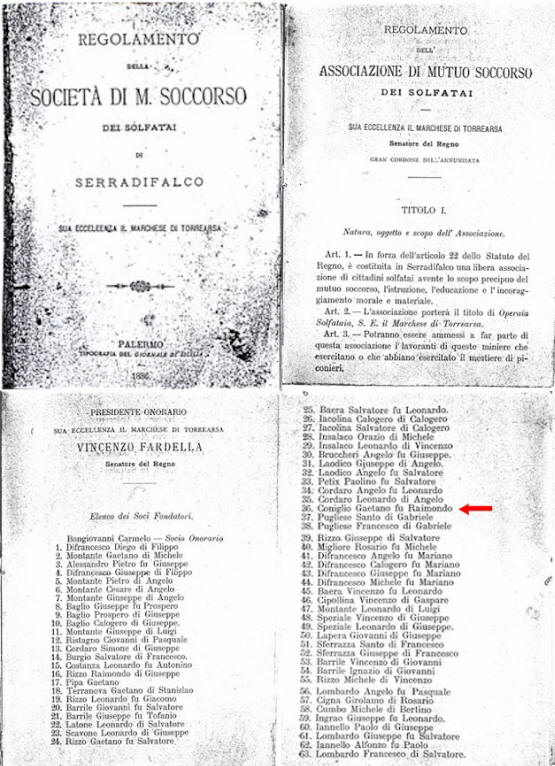

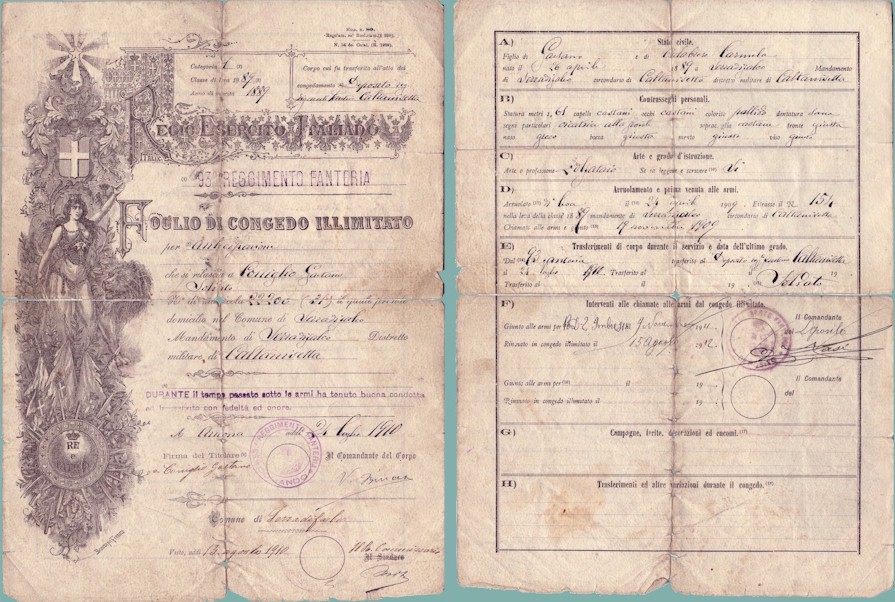




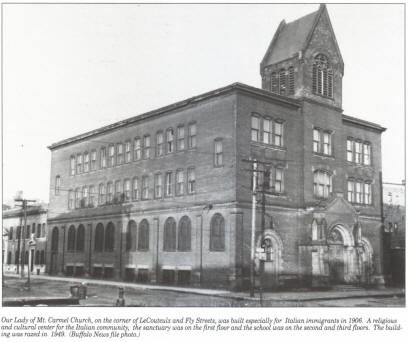
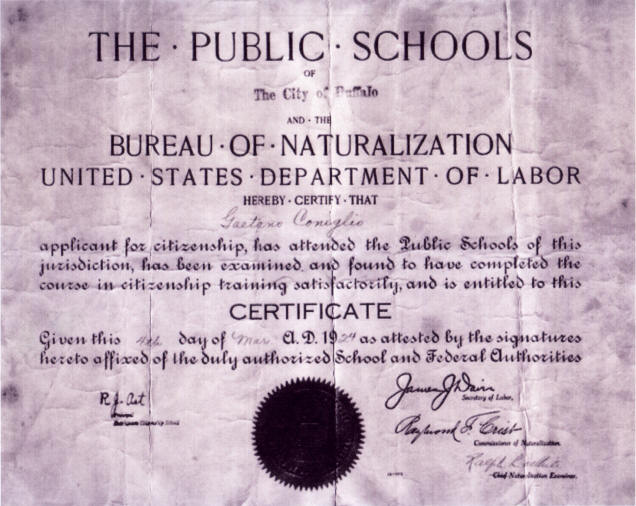
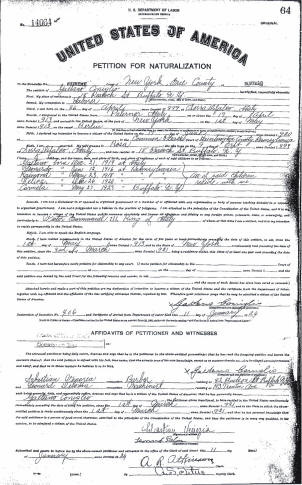
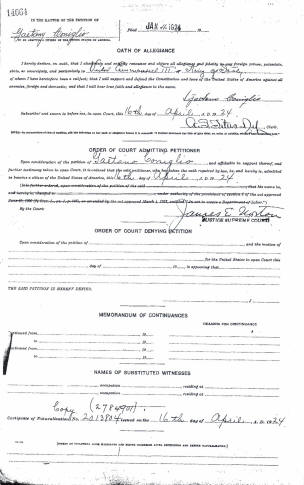

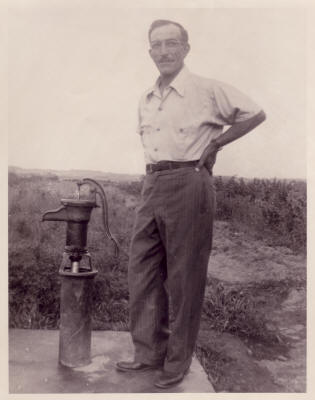
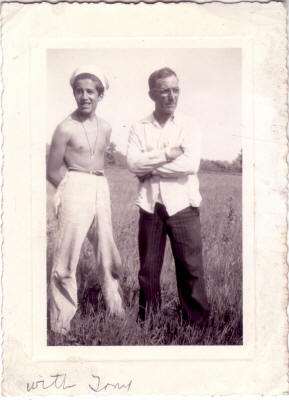


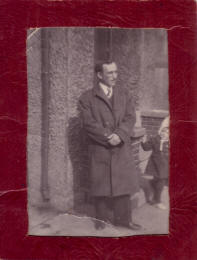
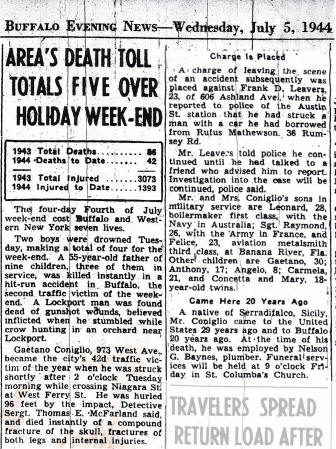
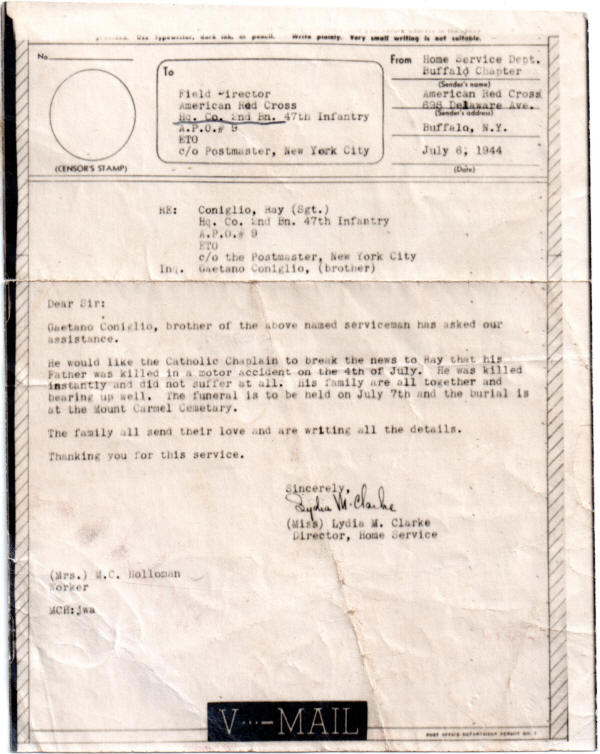
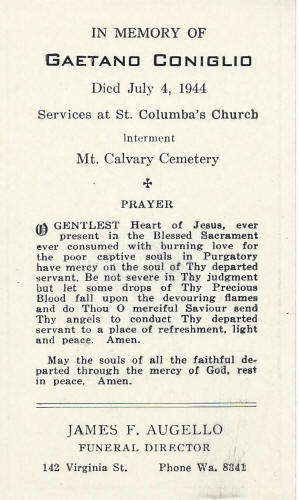
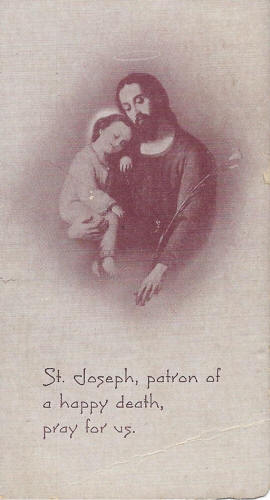

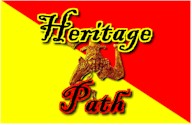
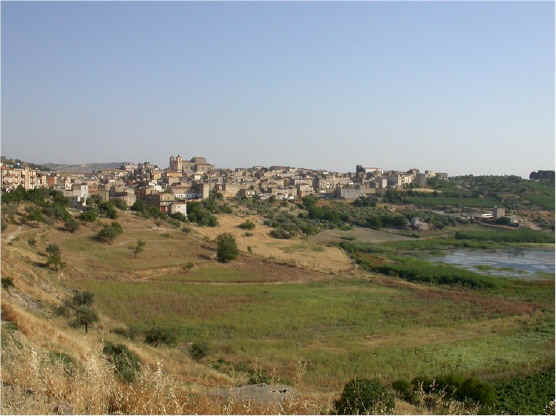
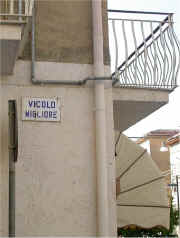
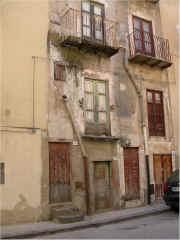
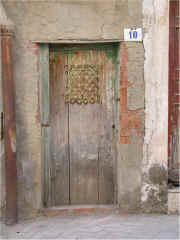


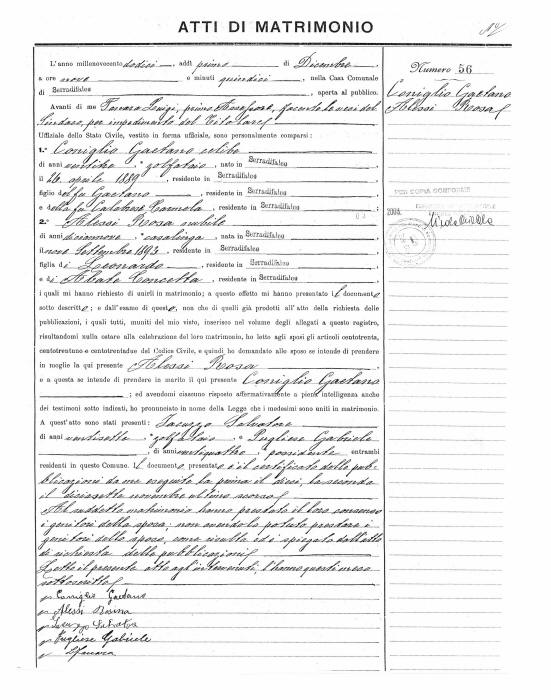
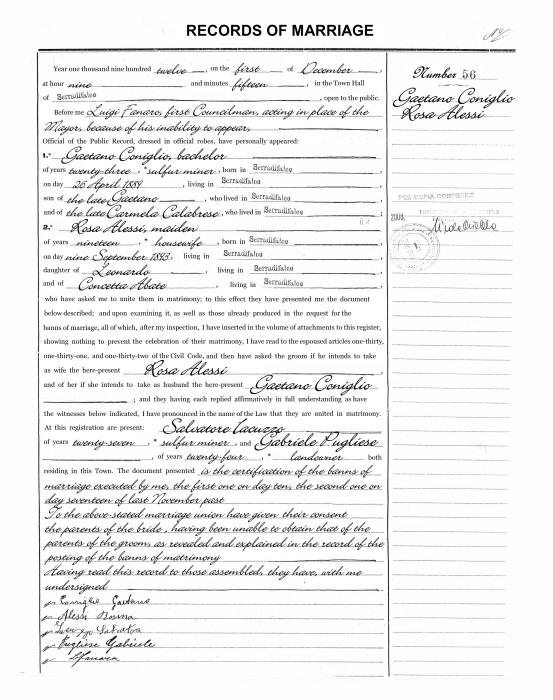

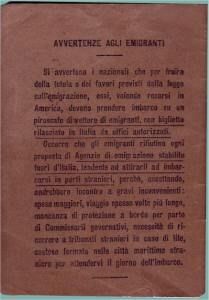

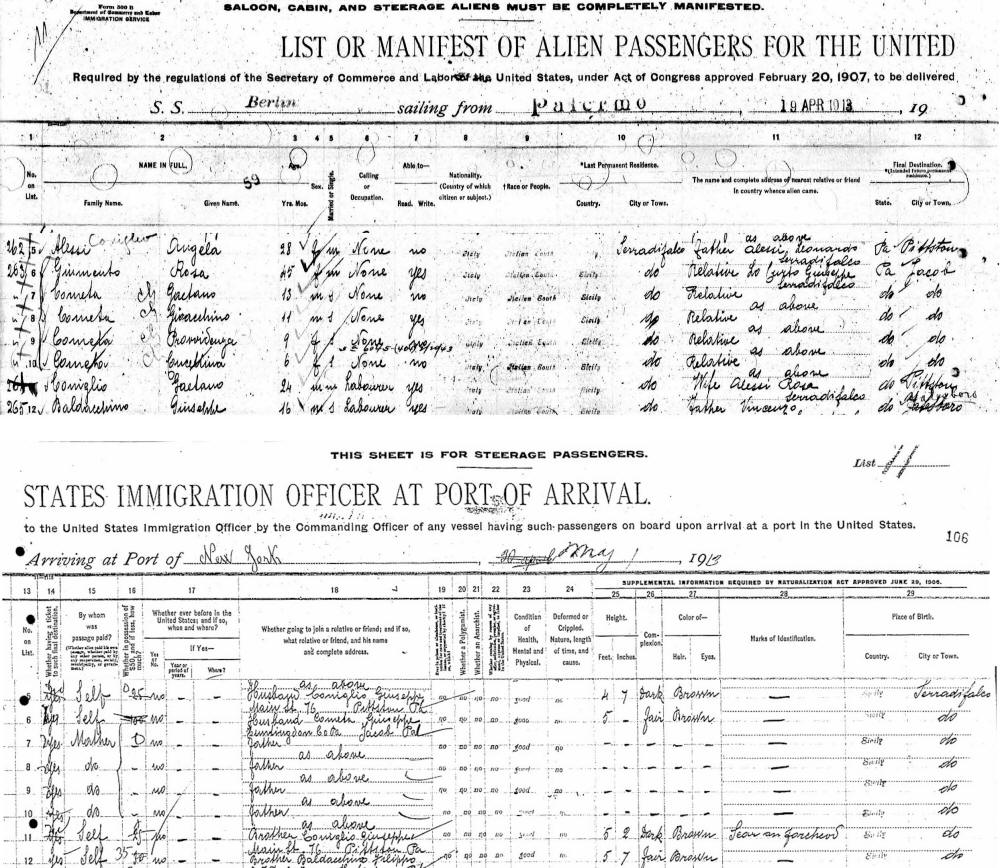


_small.jpg)

